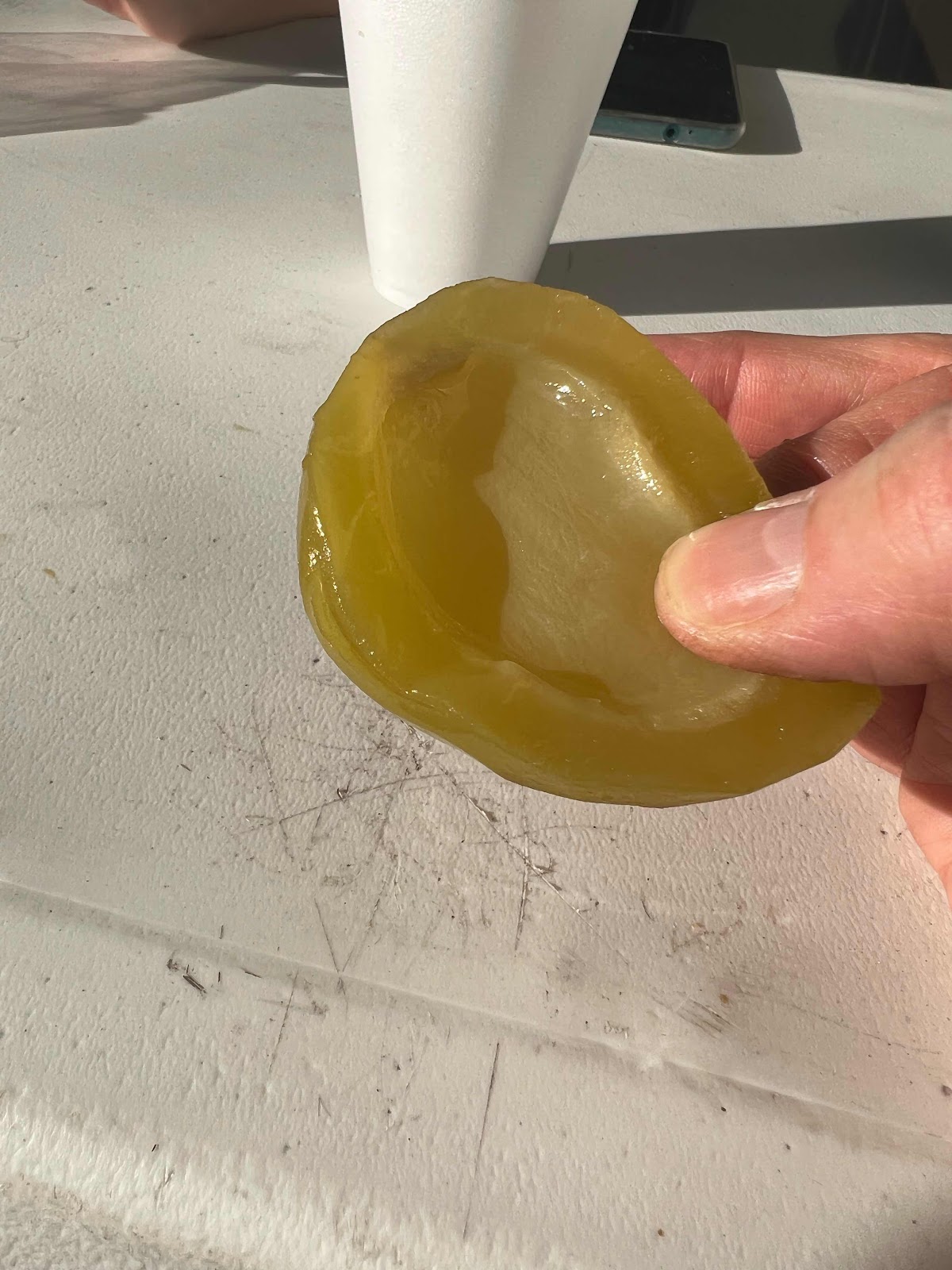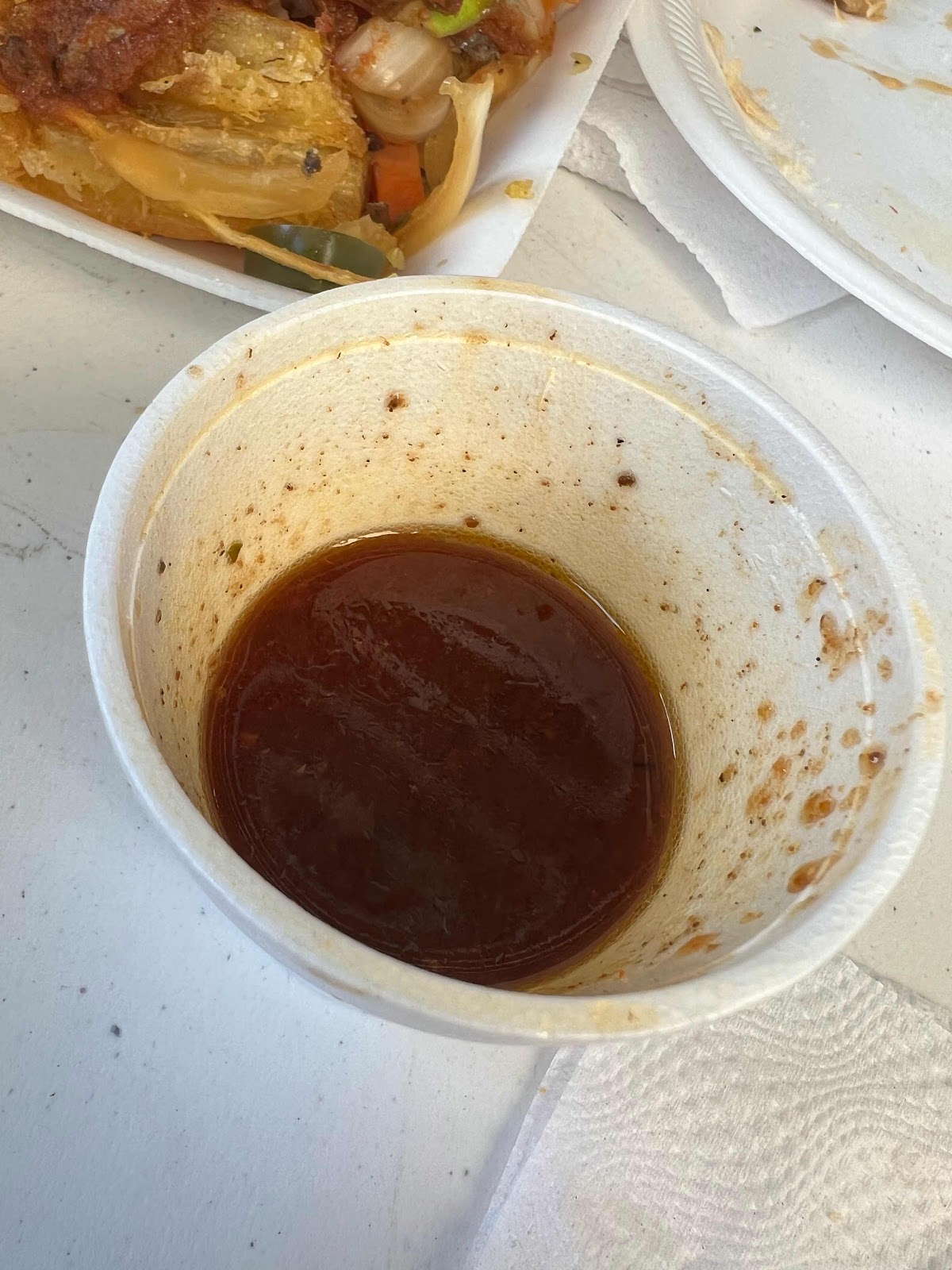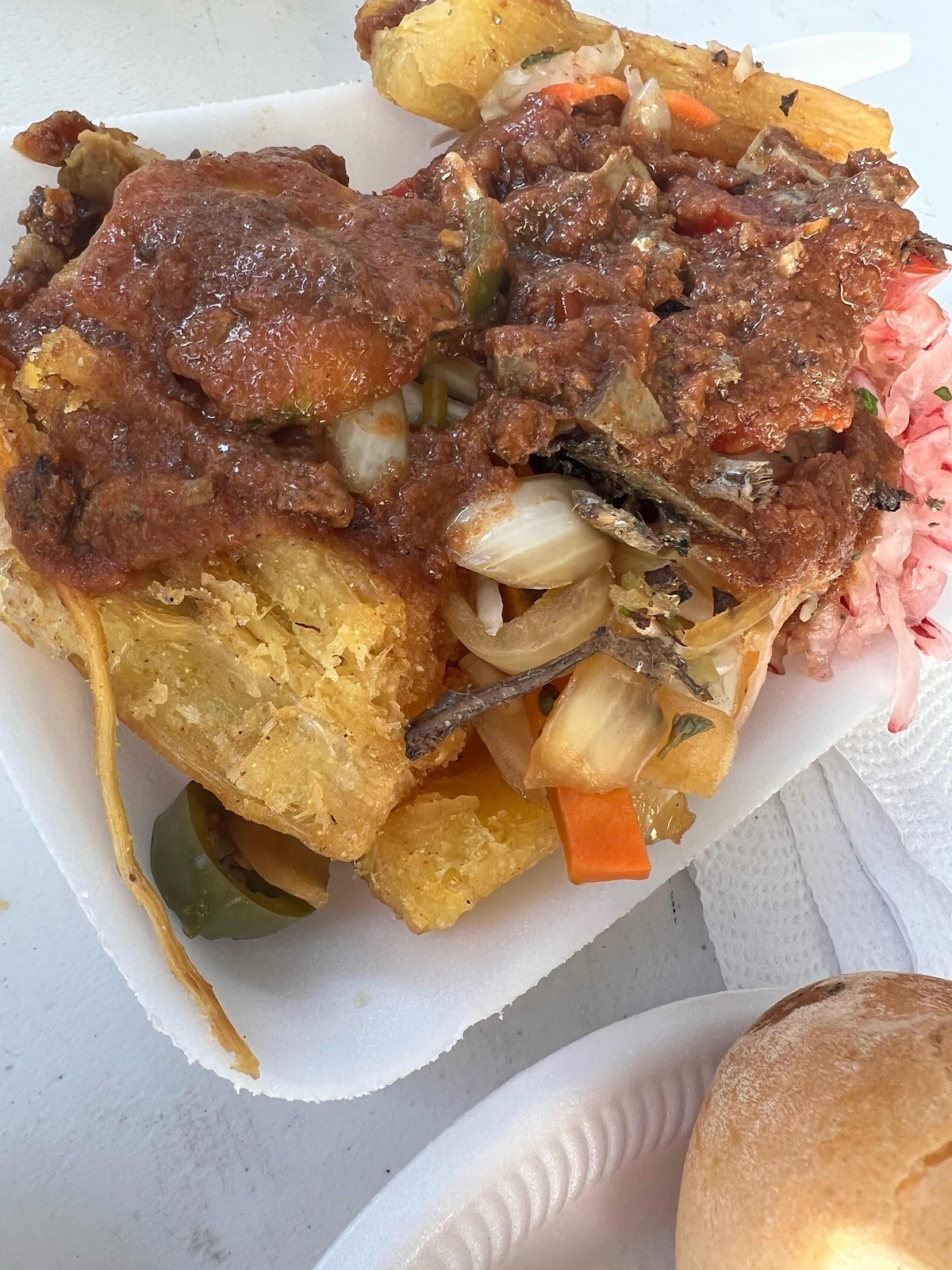Day 2 is brought to you by Perpetually Dancing Fishnet Grandma, who does not exist in even the same universe as Day 1 Rice Pupusa Grandma.
It's a mystery why immigrant restaurateurs transport certain dishes but not others. In all my Salvadoran ramblings through Queens, Jersey, and other hotspots, I’ve never spotted nuégados, which are ubiquitous...well, típicos. Rectification achieved!
Let's start on the left with the nuégados de masa (made of corn, but not called maíz because corn meal, or masa, is distinguished from corn itself, ala fine-sliced Eskimo distinctions re: snow). These are hush puppies. They're even served with molasses, like hush puppies. Only diff is these are fried crunchy straight through, with no inner chewy/cakey core. See cross section below:
And they're made by people steeped in pre-Colombian corn familiarity, as opposed to your average Alabama housewife picking up a package of cornmeal from the Piggly Wiggly on her way home from pilates.
Nuégados de yuca are more risen (in the yeasty sense as well as the godly sense), and the nuégados de huevo (egg) are, appropriately, large enough to have mothered the others. And they have a remarkable layered, moist texture which contrasts movingly with the crusty exterior. It reminds me of like three different things, but they’re so out-of-context here that I can’t recall. One day I’ll be eating okonomayaki or whatever and it’ll flash.

Alongside, I tried two corny atoles (I'll translate as “hot porridge drinks"): atol de maiz tostado, which is bland (to counterpart the molasses-dripping intensity of the nuégados), and atol chilate, which is herbed with something vaguely like eucalyptus. The classic flavoring is ginger/allspice, but idunno. Even though I’m an inveterate atolista, I couldn't get into it.

Next door is Panes Coyo, specializing in turkey sandwiches, another dish Salvadoran immigrants don't bring with them. And they're a thing.


They come with a sidecar of sauce used only for turkey sandwiches. Turkey sandwich sauce. I poured an absurd quantity in and over my sandwich, but was chided for not using all of it.

In America, a turkey sandwich is a tight, dry unit. In El Salvador, it is a hot wet sprawling mess. Sort of like the back quarter panel of this car parked just outside (did you notice the bullet holes?):

The turkey sandwich guys also had stacks of shimmering golden fried yuca I couldn't resist. I’d have been fine with them as-is, but was talked into getting them “with everything" - which, here, is taken literally, to mean “every material substance on the planet”. Sauce, baby fish, pork debris, yarn, antifreeze, who the hell knows what else.

Hot wet mess turkey sandwich with hot mess fried yuca, all eaten with hands coated with residual molasses while flies eagerly circled. I have definitely landed.

Nuégados de yuca are more risen (in the yeasty sense as well as the godly sense), and the nuégados de huevo (egg) are, appropriately, large enough to have mothered the others. And they have a remarkable layered, moist texture which contrasts movingly with the crusty exterior. It reminds me of like three different things, but they’re so out-of-context here that I can’t recall. One day I’ll be eating okonomayaki or whatever and it’ll flash.
Alongside, I tried two corny atoles (I'll translate as “hot porridge drinks"): atol de maiz tostado, which is bland (to counterpart the molasses-dripping intensity of the nuégados), and atol chilate, which is herbed with something vaguely like eucalyptus. The classic flavoring is ginger/allspice, but idunno. Even though I’m an inveterate atolista, I couldn't get into it.
The Chilateria guys kindly offered me a tourist taste of pickled and sweetened green mango. It makes no sense if you’ll think about it (if you want sweet, why choose green?), but it was highly addictive. Maybe that’s why the first dose is free.
Next door is Panes Coyo, specializing in turkey sandwiches, another dish Salvadoran immigrants don't bring with them. And they're a thing.
They come with a sidecar of sauce used only for turkey sandwiches. Turkey sandwich sauce. I poured an absurd quantity in and over my sandwich, but was chided for not using all of it.
In America, a turkey sandwich is a tight, dry unit. In El Salvador, it is a hot wet sprawling mess. Sort of like the back quarter panel of this car parked just outside (did you notice the bullet holes?):
The turkey sandwich guys also had stacks of shimmering golden fried yuca I couldn't resist. I’d have been fine with them as-is, but was talked into getting them “with everything" - which, here, is taken literally, to mean “every material substance on the planet”. Sauce, baby fish, pork debris, yarn, antifreeze, who the hell knows what else.
Hot wet mess turkey sandwich with hot mess fried yuca, all eaten with hands coated with residual molasses while flies eagerly circled. I have definitely landed.
Lagniappe: more messy still: mango spiral. Long noodly strips of green mango befouled with pumpkin seed powder, chili, and a thousand other slurpy things. No fork, just extrude from the plastic bag and attempt to ingest. Godspeed.
5 comments:
The sauce is called "relajo" and has lots of ingredients. It's the closest thing we have to a "mole" here.
Huh! Alvaro said it was “salsa de pavo”. But everyone everywhere doesn’t always know the official names for foodways….
Thanks!
“Relajo” is the mix of spices used to prepare the sauce, not what the sauce is actually called. Salsa criolla or salsa navideña would be two options to what we call it
I thoroughly enjoy your posts, Jim. thanks!
Thanks, Anonymae!
Post a Comment